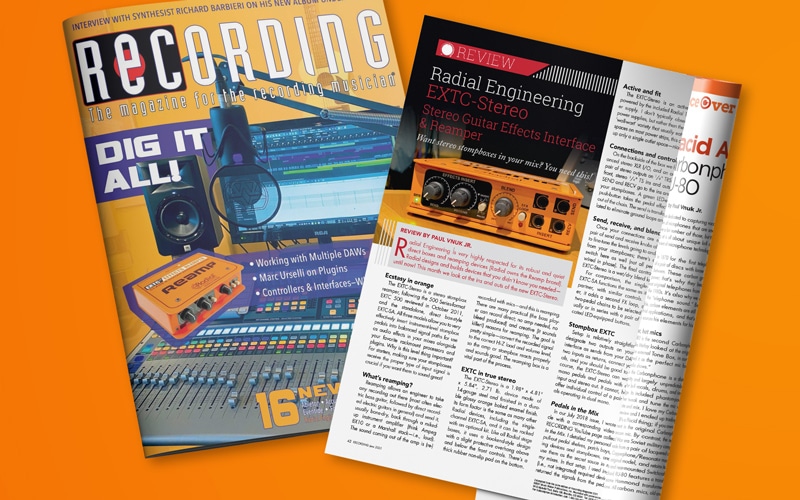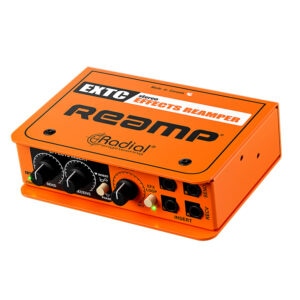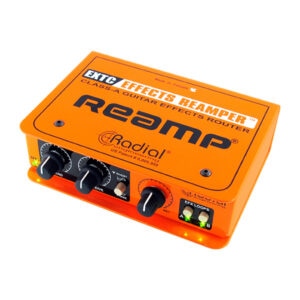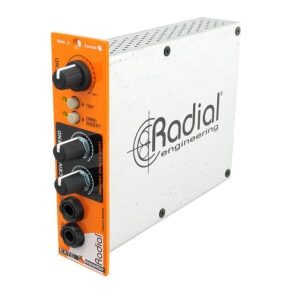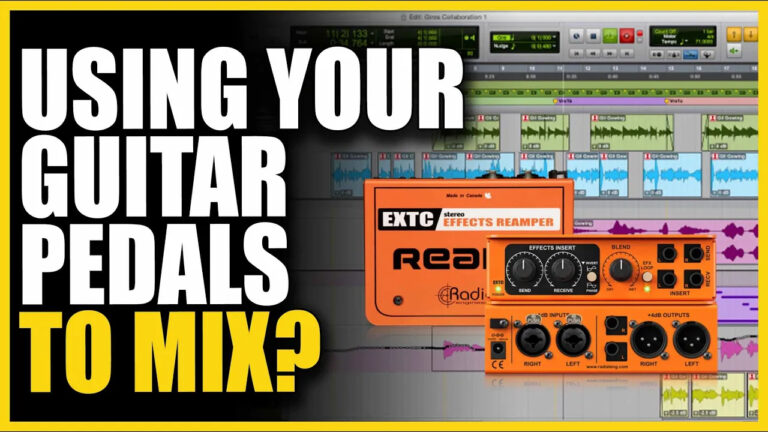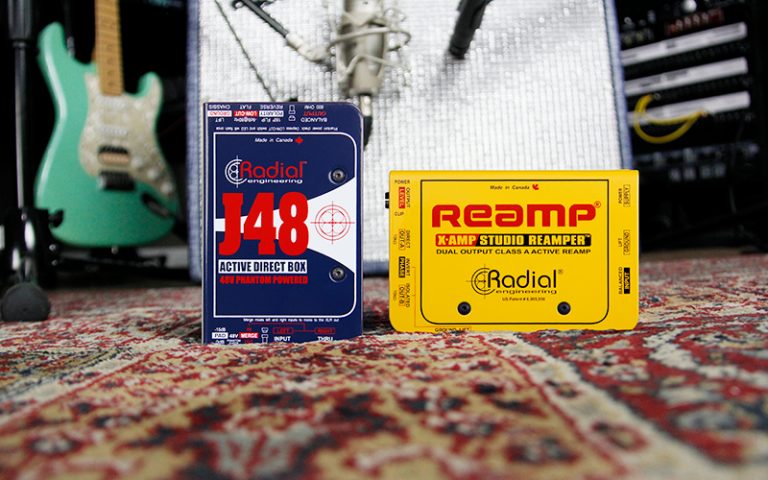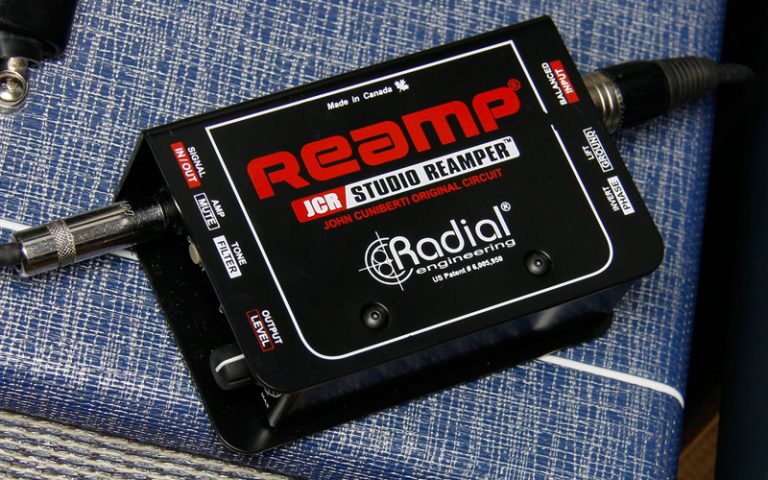The following is written by Paul Vnuk Jr. from Recording Magazine. See the Review Here
Want stereo stompboxes in your mix? You need this!
Radial Engineering is very highly respected for its robust and quiet direct boxes and reamping devices (Radial owns the Reamp® brand). Radial designs and builds devices that you didn’t know you needed—until now! This month we look at the ins and outs of the new EXTC-Stereo.
Ecstasy in orange.
The EXTC-Stereo is a stereo stompbox reamper, following the 500 Series-format EXTC 500 reviewed in October 2011, and the standalone, direct box-style EXTC-SA. All three models allow you to very effectively insert instrument-level stompbox pedals into balanced signal paths for use as audio effects in your mixes alongside your favorite rackmount processors and plugins. Why is this level thing important? For starters, making sure your stompboxes receive the proper type of input signal is crucial if you want them to sound great!
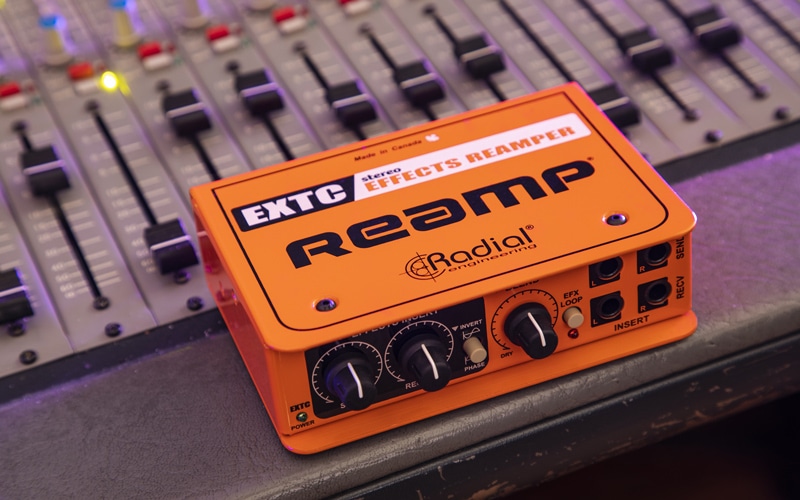
What’s reamping?
Reamping allows an engineer to take any recording out there (most often electric bass guitar, followed by direct recorded electric guitars in general) and send it, usually bone-dry, back through a miked up instrument amplifier (think Ampeg 8×10 or a Marshall stack—i.e., loud). The sound coming out of the amp is (re-) recorded with mics—and this is reamping. There are many practical (the bass player can record direct; no amp needed, no bleed produced) and creative (it sounds killer!) reasons for reamping. The goal is pretty simple—convert the recorded signal to the correct Hi-Z load and volume level, so the amp or stompbox reacts properly and sounds good. The reamping box is a vital part of the process.
EXTC in true stereo
The EXTC-Stereo is a 1.98″ x 4.81″ x 5.84″, 2.71 lb. device made of 14-gauge steel and finished in a durable glossy orange baked enamel finish. Its form factor is the same as many other Radial devices, including the single channel EXTC-SA, and it can be racked with an optional kit. Like all Radial stage boxes, it uses a bookend-style design with a slight protective overhang above and below the front controls. There’s a thick rubber non-slip pad on the bottom.
Active and fit
The EXTC-Stereo is an active device powered by the included Radial 15V power supply. I don’t typically obsess about power supplies, but rather than the bulbous ‘wall-wart’ variety that usually eats up two spaces on most power strips, this one takes up only a single outlet space—nice!
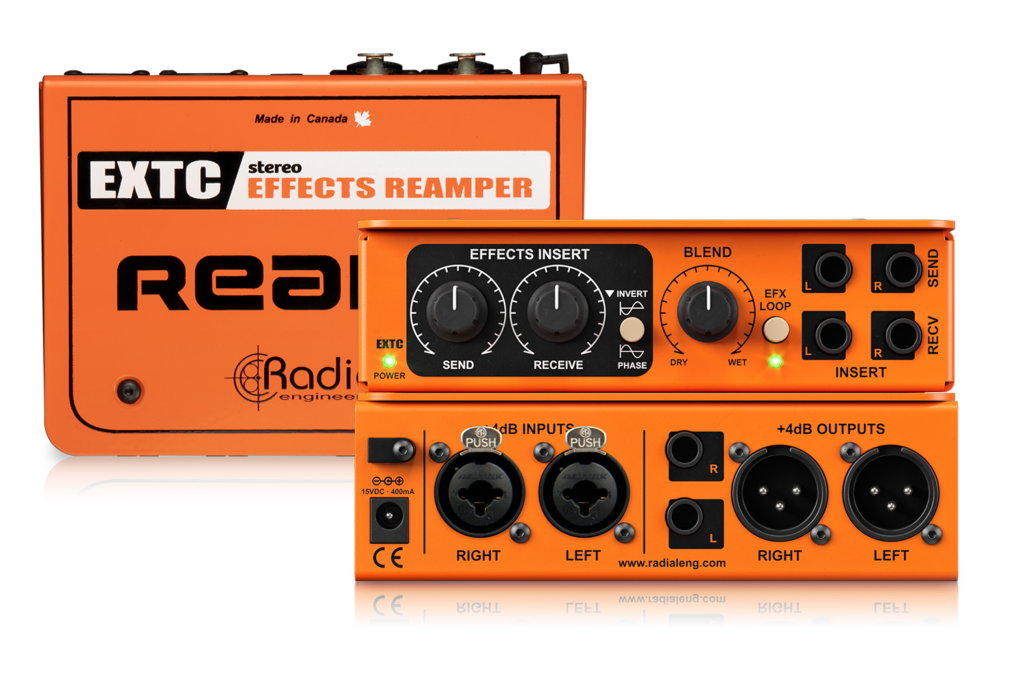
Connections and controls
On the backside of the box we have balanced stereo XLR I/O, and an additional pair of stereo outputs on 1/4″ TRS. On the front, stereo 1/4″ TS ins and outs labeled SEND and RECV go to the ins and outs of your stompboxes. A green LED-equipped push-button takes the pedal effect in and out of the chain. The send is transformer isolated to eliminate ground loops and hum.
Send, receive, and blend
Once your connections are made, a pair of send and receive knobs allow you to fine-tune the levels going to and coming from your stompboxes; there’s a phase switch here as well (not all pedals are wired in phase). The final control on the EXTC-Stereo is a wet/dry blend knob. For comparison, the single-channel EXTC-SA functions the same as its Stereo partner, with similar controls. However, it adds a second FX loop, allowing two-pedal chains to be selected individually or in series with a pair of front located LED-equipped buttons.
Stompbox EXTC
Setup is relatively straightforward— designate two outputs on your audio interface as sends from your DAW, and two inputs as returns, connect your pedals, and you should be good to roll. Of course, the EXTC-Stereo can work with mono pedals and pedals with a mono input and stereo out. It cannot, however, offer individual control of a pair of pedals operating in dual mono.
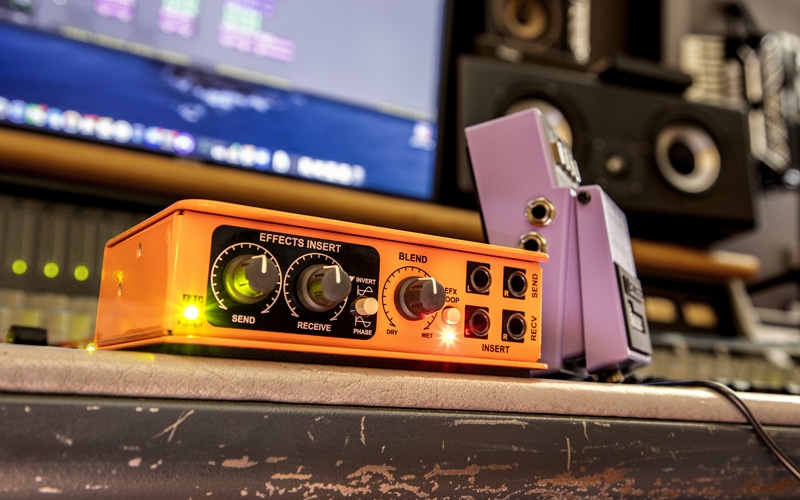
Pedals in the Mix
In our July 2018 issue, I wrote an article with a corresponding video on the RECORDING YouTube page called Pedals in the Mix. I detailed my personal setup of pull-out pedal shelves, patch bays, reamping devices and stompboxes, and how I use them as the secret sauce in many of my mixes. In that setup, I used individual (i.e., not integrated) required devices and returned the signals from the pedals into the instrument inputs on many of my pre-amps. Integrating the EXTC-Stereo into this same setup removes the need for multiple individual components (direct boxes, separate reamping boxes, cables and power supplies, multiplied by two for stereo—it adds up fast) and makes things even more streamlined and easier to control. I’ve used the EXTC-Stereo to add a Boss Waza-Craft CE-2 to a dry Rhodes piano take, to add a Caitlinbread Talisman plate reverb to a lead vocal (one of my favorite plates), and to add stereo Strymon BigSky reverb to a drum bus, synth tracks and more.
Why Reamp®?
The first time I encountered this procedure was over a decade ago, at the studio of our Copy Editor Mike Scheibinger, who was using a Radial X-Amp [first edition, hot off the line… – Copy Ed.] to Reamp® vocals through a little green MXR Carbon Copy analog delay pedal. Perhaps you’re wondering, as I was, why do I need a dedicated reamping device to use stompbox pedals as external effects? The correct answer is impedance matching (critical) and proper levels (get the impedance right and the rest will follow). Without proper reamping, the signal going into your stompbox will be too strong—it’ll overload the pedal and make it sound buzzy and mushy. Also, the output level from the pedal going into your DAW will most likely be too low, and boosting it up to line level can un-necessarily raise the noise floor. It’s a revelation to hear your stompboxes performing at their absolute best—the effect is not subtle, it’s glorious. These Radial devices allow you to achieve the proper levels at every stage and make your stompers shine. Check out the screenshot below —it shows the captured stompbox effect track both with and without the EXTC-Stereo in use.
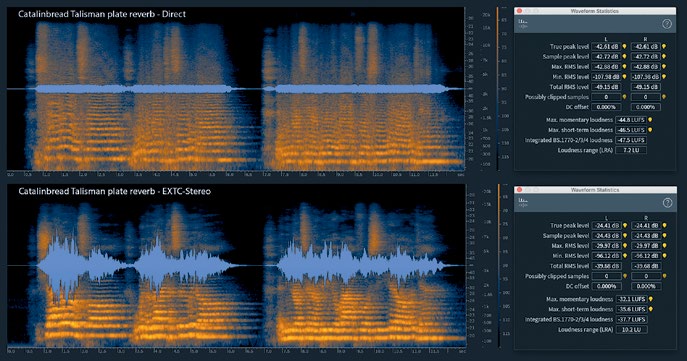
Conclusions
Adding effects pedals into your mixes is a great way to add unique tones, real-time manipulation and excitement. The Radial EXTC-Stereo makes light work of the task and makes sure the job gets done right. Obviously, I’m a big fan.



